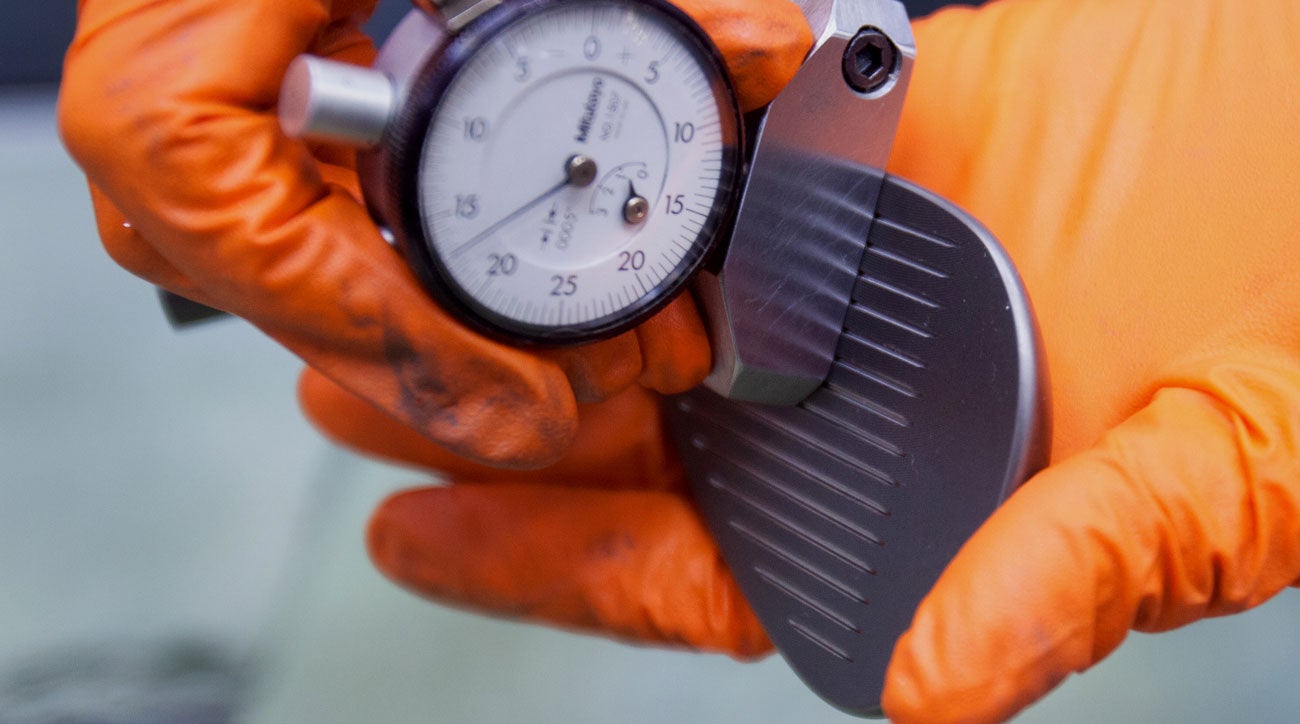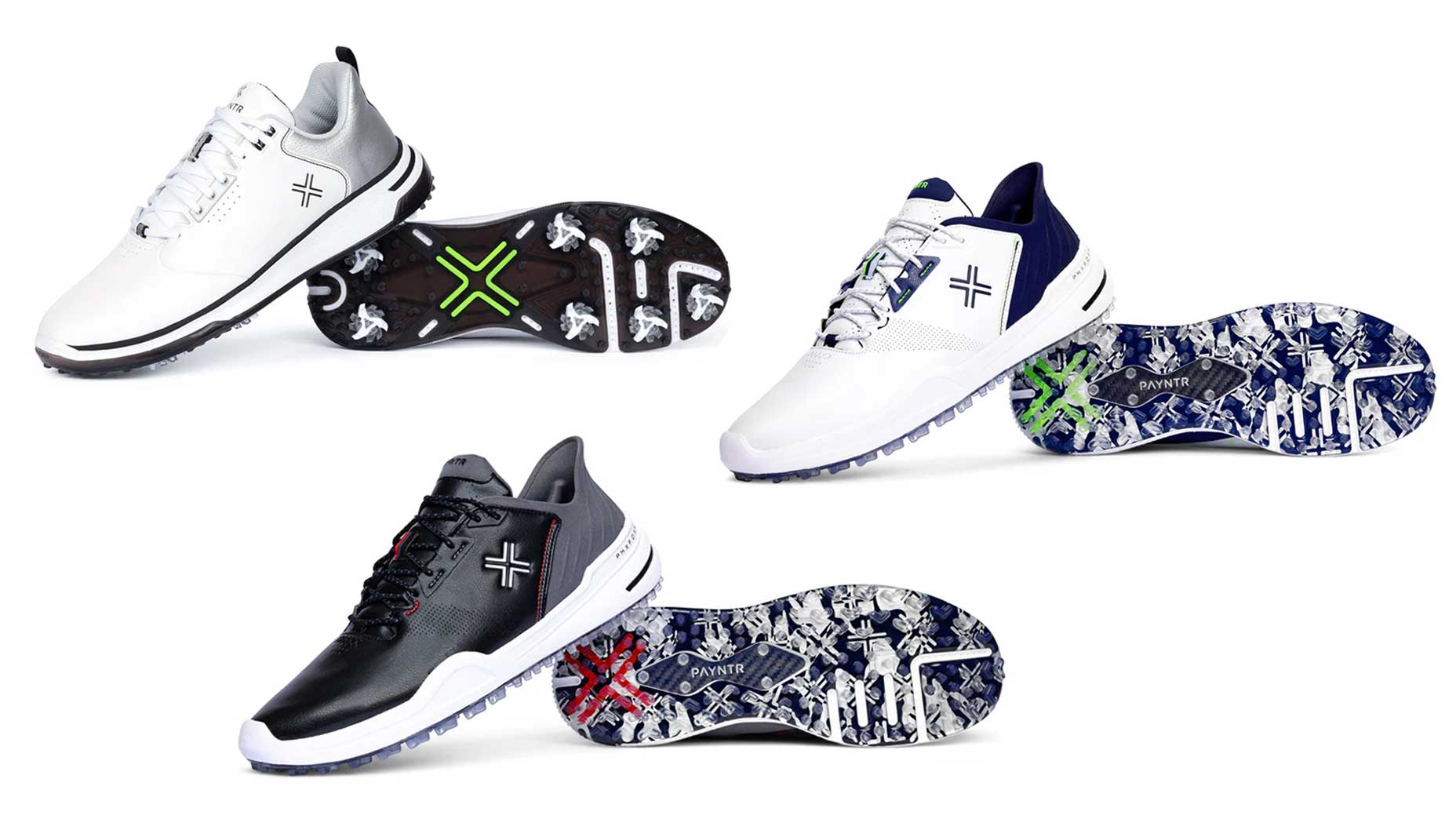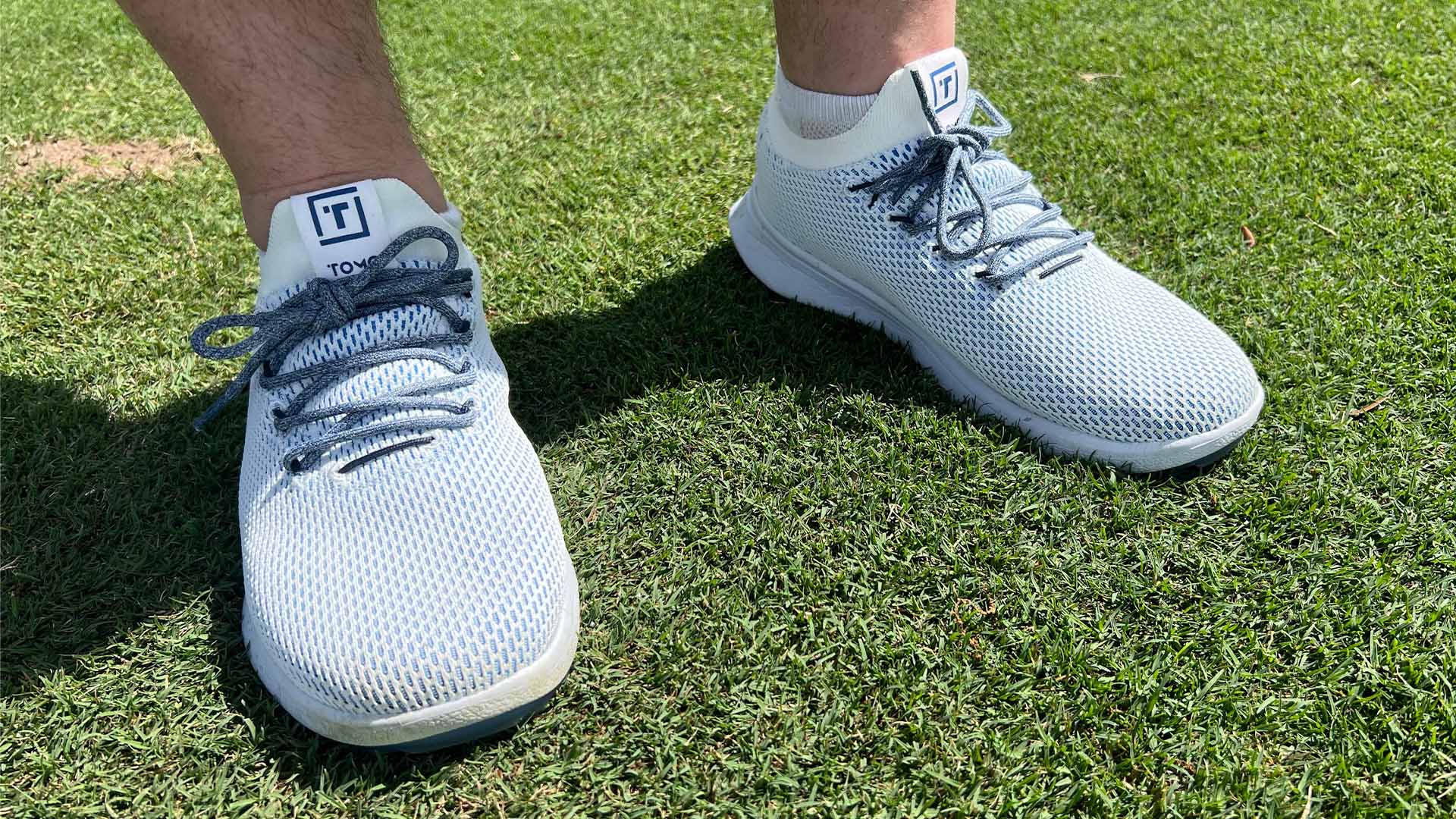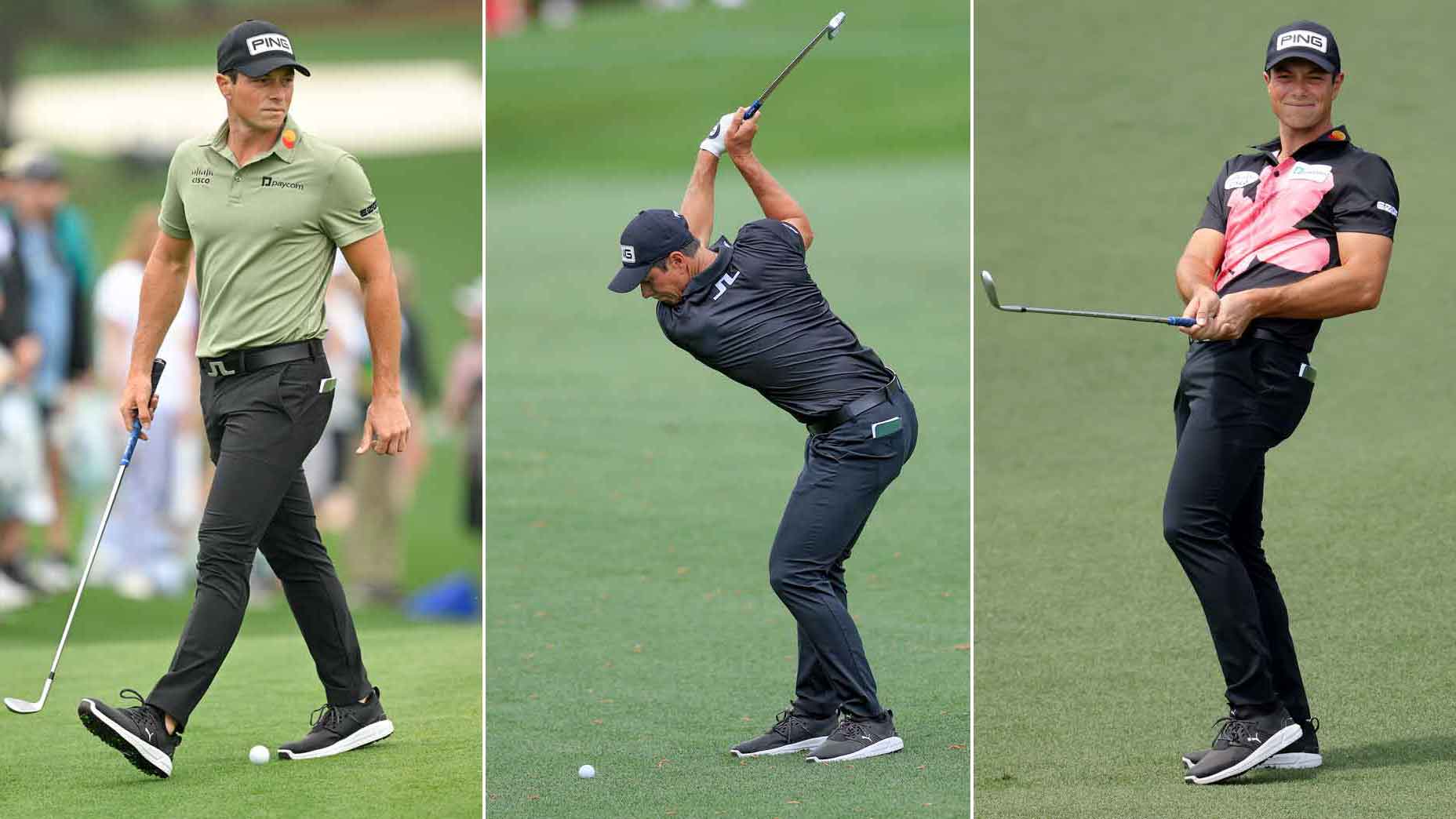Welcome to another edition of Yo, Gear Guy!, an interactive GOLF.com series in which our resident dimplehead (a.k.a., GOLF’s deputy editor of equipment, Mike Chwasky) fields your hard-hitting questions about clubs, fittings, gadgets, bounce, lofts, CG, MOI, and a bunch of other scary acronyms. Got a question for Gear Guy? Hit us up on Twitter, Facebook or email.
Andrew Chamberry on Facebook: At what point should I buy a new lob wedge? Does it really matter that my old faithful is beaten and battered from years of extensive use?
The fact that your trusty old lob wedge is “beaten and battered” is not a problem it itself, rather it’s the fact that the grooves are worn that is an issue. All wedges, particularly utility wedges like a 58- or 60-degree, depend on high spin rates to perform optimally around the greens, and worn out grooves can have a significant effect on spin rates, consistency, and accuracy. In fact, a number of years ago we conducted a test utilizing a launch monitor and found a brand new wedge produced close to twice the spin on a 25-yard pitch shot than an older model with worn grooves, greatly reducing control and stopping power. Also, because of the lack of spin, an old wedge will produce higher launch angles as the ball will roll up the face instead of being grabbed by the grooves. Bottom line, once your wedge grooves look worn its probably time for a replacement.

Josh Pratta on Facebook: I’m not one for change. Is my trusty old putter costing me strokes?
We talked about this not too long ago but since you ask again, the simple answer is “maybe.” On one hand, if you have an old 8802 or Anser-style blade that feels like an extension of your body and still works, then by all means keep it in your bag. However, there have been massive advances in putter technology in the last decade or so and modern designs, particularly mallets, often offer much higher MOI (moment of inertia), forgiveness, and stability on off-center hits. What this means for the end user is more consistent results in regard to distance and direction across the entire clubface. In addition, things like improved groove designs, counterbalancing, custom fitting, golf ball fitting, and oversized aftermarket (or proprietary design) grips all contribute to superior overall performance for a high percentage of players. Even on the professional tours, many players have turned to larger, more forgiving designs for the aforementioned reasons. So if you’re still putting great with your old Billy Baroo, then stick with it, but if you’re interested in something that might produce better results, I strongly suggest experimenting with some newer designs.
Chris Lynch on Facebook: I have multiple pairs of golf shoes. Some have spikes and some are the modern type without. Should playing conditions affect which shoes I wear?
Advances in “spikeless” golf shoe design, meaning those with non-replaceable traction elements instead of standard plastic spikes, have made them so popular that even some Tour pros are wearing them. That being said, your level of flexibility, swing type, and personal preference, among other issues, can have a lot to do with which type of shoe is best for your game. When it comes to choosing shoes based on playing conditions, it’s fair to say that in some cases you very well might be best served by doing so, depending on some variables. Obviously, soft, wet conditions probably favor spiked shoes with lots of support and excellent waterproof performance. By the same token, firm conditions very well might be more comfortable in spikeless shoes. It all depends on what works for you and your taste. I suggest some basic experimentation to determine what works best. Another suggestion is to pay more attention to proper fit than anything else, as poorly fitted shoes can not only sap speed from your swing but also cause foot, ankle, and leg pain, and in some cases, actual injury.

Katie Marmo on Reddit: The new Callaway stars and stripes golf balls are pretty cool looking. Do these designs have any effect whatsoever on overall performance?
Assuming when you ask about golf balls with “these designs” you specifically mean Callaway’s Truvis pattern. For the few folks out there who aren’t familiar with the Truvis pattern, it looks a bit like a soccer ball with a combination of white and red blocks or yellow and black in the normal models, and in some cases, red, white, and blue with stars and stripes. Simply put, no, this paint job has absolutely no impact on launch angles, spin rates, overall distance, or any other metric you might measure with a launch monitor. It’s just paint. However, the Truvis pattern can be very helpful as visible technology, particularly when working on your putting or short game in general, since it helps you see how the ball is rolling or spinning. Personally I love the Truvis pattern and use a sleeve to work on my putting on a fairly regular basis. Also, I find balls with the Truvis pattern appear a bit larger than solid colored balls at address, which is nice for building confidence before you hit a full swing shot.
Jeff Marano on Instagram: Is there really much of a difference between a driving iron and a hybrid?
Yes, there really is quite a bit of difference between a driving iron and hybrid, and choosing the right one for your game can be critical to achieving the performance you desire. Driving irons have developed a lot over the years and what were once simply 1- or 2-irons with maybe a little extra mass have evolved into hi-tech designs, often with hollow bodies, high-speed face inserts and composite shafts. Though they work exponentially better than old-school designs, modern driving irons are still basically irons, meaning they don’t have as much weight located away from the clubface as more wood-like designs. In contrast, hybrids typically offer deeper clubheads, more weight further back in the head for higher MOI and forgiveness, and more versatile sole designs, allowing them to function more easily from a variety of lies and turf conditions. If you’re a faster swinger who’s a competent ballstriker than by all means check out one of the many excellent driving irons currently available, but if you’re a recreational player without a ton of clubhead speed who could use some help achieving adequate launch and spin from longer distance, be sure to take a look at some hybrid models.






